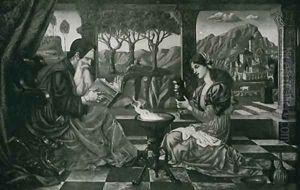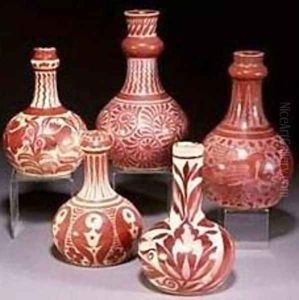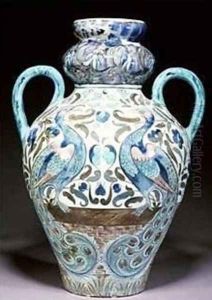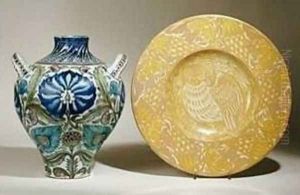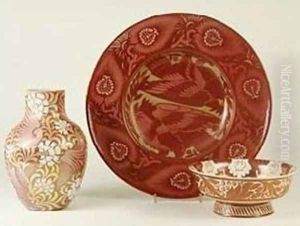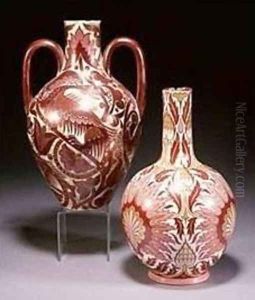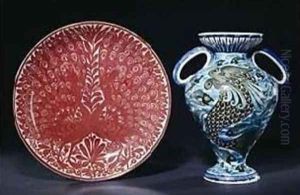William Frend De Morgan Paintings
William Frend De Morgan was an English potter, tile designer, and novelist, associated with the late 19th-century Pre-Raphaelite and Arts and Crafts movements. Born on November 16, 1839, in Gower Street, London, De Morgan was the son of the distinguished mathematician and logician Augustus De Morgan and Sophia Elizabeth Frend. He was initially educated at home and later attended University College London, where he pursued various artistic and scientific studies but ultimately did not complete a degree.
De Morgan began his artistic career in stained glass and furniture design, but he is best known for his work in ceramics. He set up his own pottery works in Chelsea in 1872, where he produced beautiful tiles, pots, and other ceramic items, characterized by their rich colors and intricate designs. He was greatly influenced by Middle Eastern art, particularly the lusterware of Persia, and he was one of the first to reintroduce the technique of luster-glaze to British pottery.
His work often featured fantastic creatures, floral patterns, and medieval themes, aligning with the aesthetics of the Pre-Raphaelites and the Arts and Crafts movement. De Morgan's tiles were used in a variety of settings, including fireplaces, furniture, and as architectural elements in both public buildings and private homes. His innovative designs and technical expertise in glazes and firing processes set his work apart from that of his contemporaries.
Despite his success as a potter, De Morgan's pottery business was not financially successful, and he eventually turned to writing to supplement his income. In the latter part of his life, he published several well-received novels, including 'Joseph Vance' (1906) and 'Alice-for-Short' (1907), which showcased his wit and storytelling abilities. His literary works are often considered part of the late Victorian and Edwardian novel tradition.
William Frend De Morgan died on January 15, 1917, in London. His legacy as a potter and designer remains influential, with his works held in many major museums and collections around the world. He is remembered not only for his artistic contributions but also for his commitment to the principles of the Arts and Crafts movement, which advocated for the value of craftsmanship and the beauty of handmade objects.
